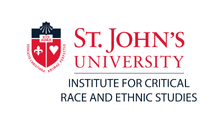ORCIDid
0000-0002-5303-7654
Abstract
The Karnataka hijab ban is a turning point in India’s evolving secularism, exposing the deep contradiction between constitutional religious freedoms and the state’s growing intolerance toward Muslims. In January of 2022, the hijab ban in educational institutions in Karnataka sparked nationwide protests and legal battles. The controversy began when a group of Muslim girls were denied entry to their college in Udupi for wearing hijabs, arguing that the attire violated the institution's dress code. The matter escalated to the Karnataka State High Court, which upheld the ban on hijabs in classrooms and was later challenged in the Supreme Court of India. In October of 2022, Supreme Court of India delivered an inconclusive judgement. This essay critically examines how Indian media constructed narratives around the hijab ban, shaping public opinion through discursive strategies that framed hijabi women as victims, security threats, or symbols of cultural incompatibility. Using Critical Discourse Analysis (CDA) and Co-Cultural Theory (CCT), this study analyzes nineteen news stories from major Indian media outlets to uncover how language, framing, and ideological biases reinforce Islamophobic state policies. This essay also highlights how Muslim women negotiate, resist, and reclaim agency in response to institutionalized discrimination. While dominant media narratives seek to erase their autonomy, hijabi women counteract exclusion through digital activism, advocacy networks, and legal resistance, disrupting state-enforced uniformity.
Recommended Citation
Khan, Shehbaz Hameed
(2025)
"Unveiling Silenced Voices: A Critical Discourse Analysis of Muslim Women's Marginalization and Media Representation in the Karnataka Hijab Controversy,"
Journal of Critical Race and Ethnic Studies: Vol. 2:
Iss.
2, Article 1.

